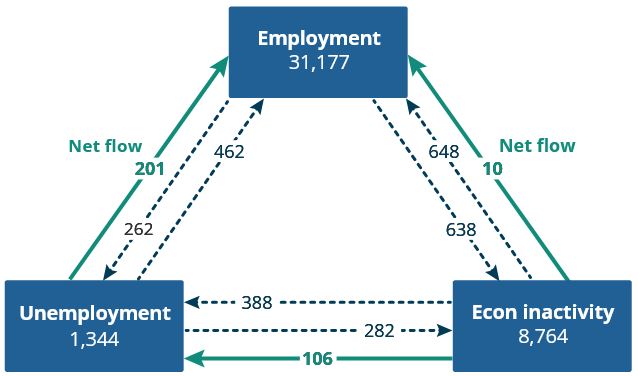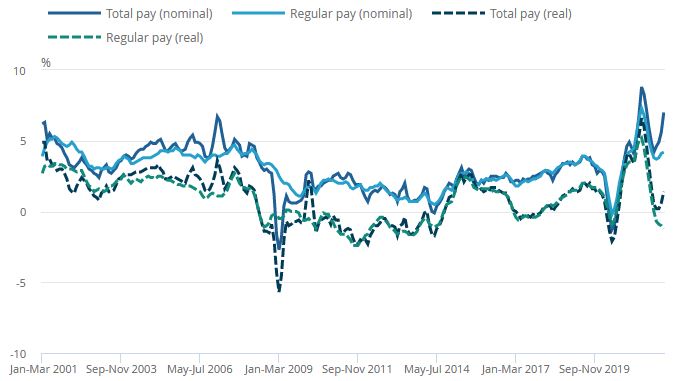ONS Labour Market May 2022
Vacancies hit another record
- The number of job vacancies between February and April rose to a new record of 1,295,000. This marked an increase of 499,300 from pre-pandemic levels (Jan-Mar 2020).
- However, the rate of growth in vacancies slowed for the ninth consecutive period, rising 2.7% in the quarter to April. Nonetheless, it’s the most sustained period of positive growth since the end of 2015.
- By industry, the fastest rates of quarterly growth were seen in arts, entertainment and recreation at 33.0% and construction at 28.1%.
Record high payroll employees
- Early payroll estimates for April show the number of payrolled employees rose by 4.2% year-on-year to 29.5 million. This is up 530,000 on the pre-Covid level, with the number of payrolled employees up by 1.8% since February 2020.
- All age groups saw an increase in payrolled employees between April 2021 and April 2022, including an increase of 503,000 payrolled employees aged under 25 years.
- The largest yearly increase in payrolled employees continued to be in accommodation and food services (a rise of 333,000 employees), while the smallest was in the construction sector (a rise of 3,000).
Unemployment falls to 3.7%
- The latest unemployment estimates for January to March show a 0.3pp decline on the previous three-month period to 3.7% (1,257,000 people). This was 0.2pp below pre-pandemic levels.
- Compared to the previous quarter, the economic inactivity rate increased by 0.1 percentage points to 21.4% in the period – driven by women.
UK flows between employment, unemployment, and economic inactivity, people aged 16 to 64 years, (seasonally adjusted) between October to December 2021 and January to March 2022

Source: Office for National Statistics
Record high flow inactivity to employment
- The employment rate increased by 0.1 percentage points on the quarter to 75.7% in the three months to March, but was 0.9pp down on pre-pandemic levels.
- The increase in the employment rate was driven by the movement of people aged 16 to 64 years from unemployment to employment.
- However, there was also a record-high movement of people from economic inactivity into employment.
- Total job-to-job moves also increased to a record high of 994,000, driven by resignations rather than dismissals, during the January to March 2022 period.
Rise in hours worked
- In the three months to March, total actual weekly hours worked increased by 14.8 million hours compared with the previous three-month period to 1.04 billion hours.
- This is still 10.7 million hours below pre-coronavirus levels (December 2019 to February 2020).
- However, the average actual weekly hours worked are similar to averages before the pandemic, with the average hours worked by part-time workers at a record high (16.8 hours per week). Consequently, the shortfall in total hours is down to the reduced numbers in employment.
Inflation outpaces regular earnings
Annual regular pay edged higher in the three months to March but remains below inflation.
- In nominal terms, average regular pay (excluding bonuses) for employees in Great Britain was £558 per week before tax and other deductions from pay – up from £536 per week a year earlier.
- Average total pay (including bonuses) for employees in Great Britain was £615 per week before tax and other deductions from pay – up from £559 per week a year earlier.
- Regular and total pay growth rose by 4.2% and 7.0% respectively in the three months to March compared to a year earlier.
- In real terms (adjusted for inflation), total pay rose 1.4% in the three months to March, while regular pay declined 1.2% over the period.
Average weekly earnings annual growth rates in Great Britain, seasonally adjusted, January to March 2001 to January to March 2022

Source: ONS
Back to Retail Economic News